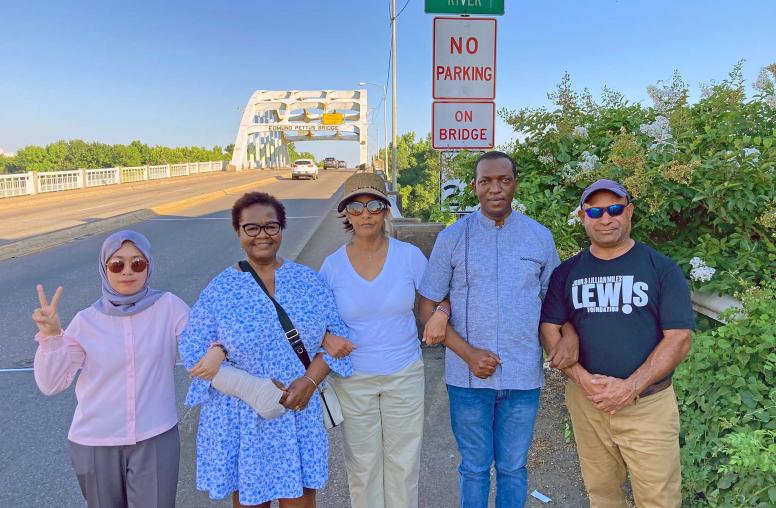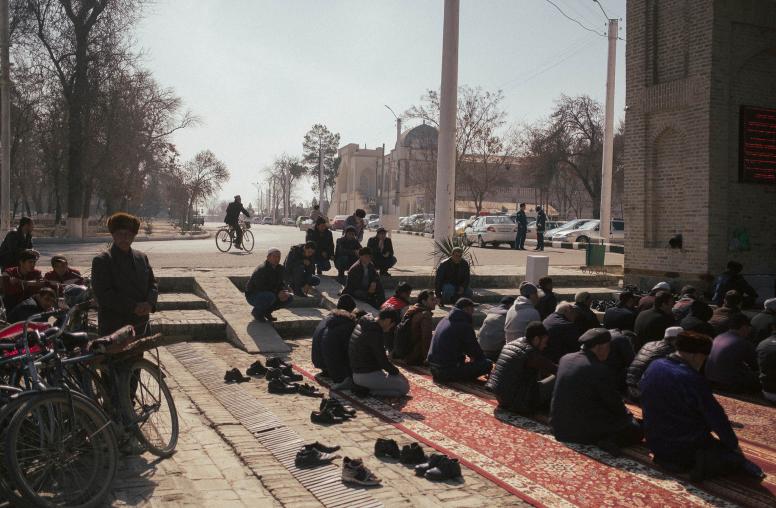Preparing for Peacebuilding
Building a viable and just peace, as well as creating and operating programs that sustain it, is a complex process that requires significant expertise. This course will equip learners with the ability to build and utilize a more comprehensive and strategic approach to constructing a just peace.

Course Overview
“Strategic peacebuilding” means utilizing a holistic approach to violent conflict that builds and maintains top-down and bottom-up connections between people as well as between groups at all levels. It means creating a plan with a method in mind for how to execute it over time, realizing that we may have to revamp it as new challenges emerge in the field, and combining the efforts of insiders and outsiders committed to peace and a new path of social change.
To end situations of large-scale violence, hatred or injustice, professional peacebuilders must combine their knowledge of the central concepts, theories and findings of modern peace research with what we know of the best practices of experts engaged in peacebuilding and related issues, and with careful, in-depth, reflection on how insiders and outsiders to a violent conflict can build stable peace in their particular situation.
This course has been designed to provide a cross-disciplinary examination of violence and peace issues and in so doing underscores the shared interest and circumstances across various fields that participate in and contribute to peacebuilding—sociology, psychology, anthropology, political science, international relations, economics, and religion.
If you cannot play the video, click here to download it.
Agenda
Chapter 1 An Introduction to Strategic Peacebuilding
This session provides an overview of the seven components of strategic peacebuilding: (1) recognizing the burden of long-term violence, (2) eliciting plans from local actors for how to get to long-term peace, (3) beginning processes of moving from conflict resolution to conflict transformation, (4) identifying the needs for insider-outsider links and helping to build them, (5) identifying and attempting to deal with spoilers, (6) identifying the issues that will pose significant challenges to the success of strategic peacebuilding, and (7) “evaluating, eliciting, evaluating, eliciting…” During this session you will be immersed in a scenario that exposes you to the myriad issues, problems, and dilemmas that can emerge “the day after the violence ends.” Through this scenario you will come to understand what is meant by strategic peacebuilding, how and why the concept has evolved, and why it is important.
Chapter 2 Long-Term Violence and Conflict Transformation
The second session takes a closer look at the ways in which long-term violence impacts various elements of social, political, and economic structures of a community. It also takes a close look at the recent academic and practical shift in the field from engaging in conflict “resolution” work to conflict “transformation” work. In order to explore these components, you will be immersed in a scenario that touches on issues related to disarmament, demobilization and reintegration (DDR) and gender dynamics of peacebuilding.
Chapter 3 Insider-Outsider Links and Spoilers
The third chapter investigates how strategic peacebuilders should (or should not) work with and connect individuals, organizations and institutions from inside the zone of conflict with those who are intervening or providing support from the outside. In addition, this session deals with the problem of spoilers who seek to disrupt the peace process, be it intentionally or unintentionally. To explore these topics, you will be immersed in a scenario that touches on the issue of balancing the sometimes competing concerns of human rights and justice with conflict resolution and ending violence.
Chapter 4 Strategic Peacebuilding Challenges and Monitoring & Evaluation
The final chapter of the course looks at the challenges peacebuilders face when trying to apply the above-mentioned components in their work. It also emphasizes the importance of monitoring and evaluating what we do as strategic peacebuilders throughout the entire course of our work. In order to explore these topics, you will be immersed in a scenario that touches on crime and corruption as the new enemies of peace. This session will also provide a bridge into the second half of the course, which guides you through a series of self-paced learning experiences.
Instructor and Guest Experts
Instructor
- George Lopez, Rev. Theodore M. Hesburgh, C.S.C., Professor Emeritus of Peace Studies, University of Notre Dame
Guest Experts
- Dr. Jeffrey Helsing - Peacebuilding Consultant, former Associate Vice President of the Academy, U.S. Institute of Peace
- Nadia Gerspacher, Director, Security Sector Governance Assistance, QED Group
- Fiona Mangan, Visiting Fellow, Rule of Law Collaborative
- Maria J. Stephan, former Director of the program on Nonviolent Action, U.S. Institute of Peace


